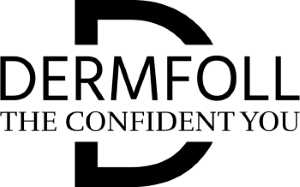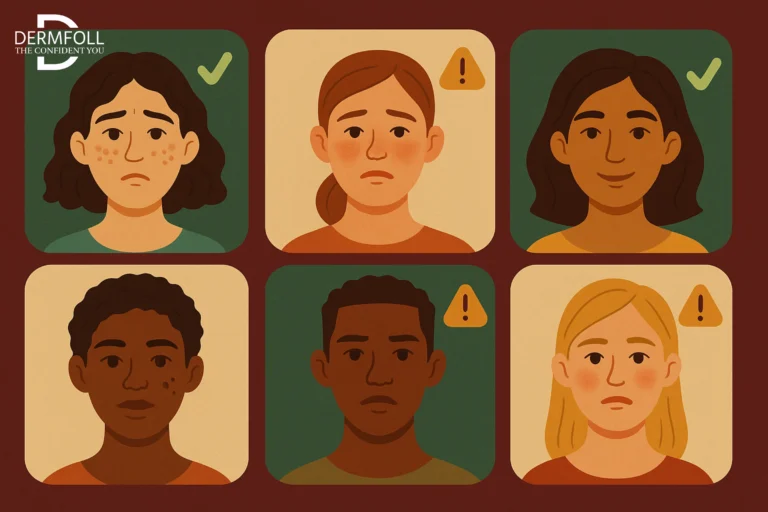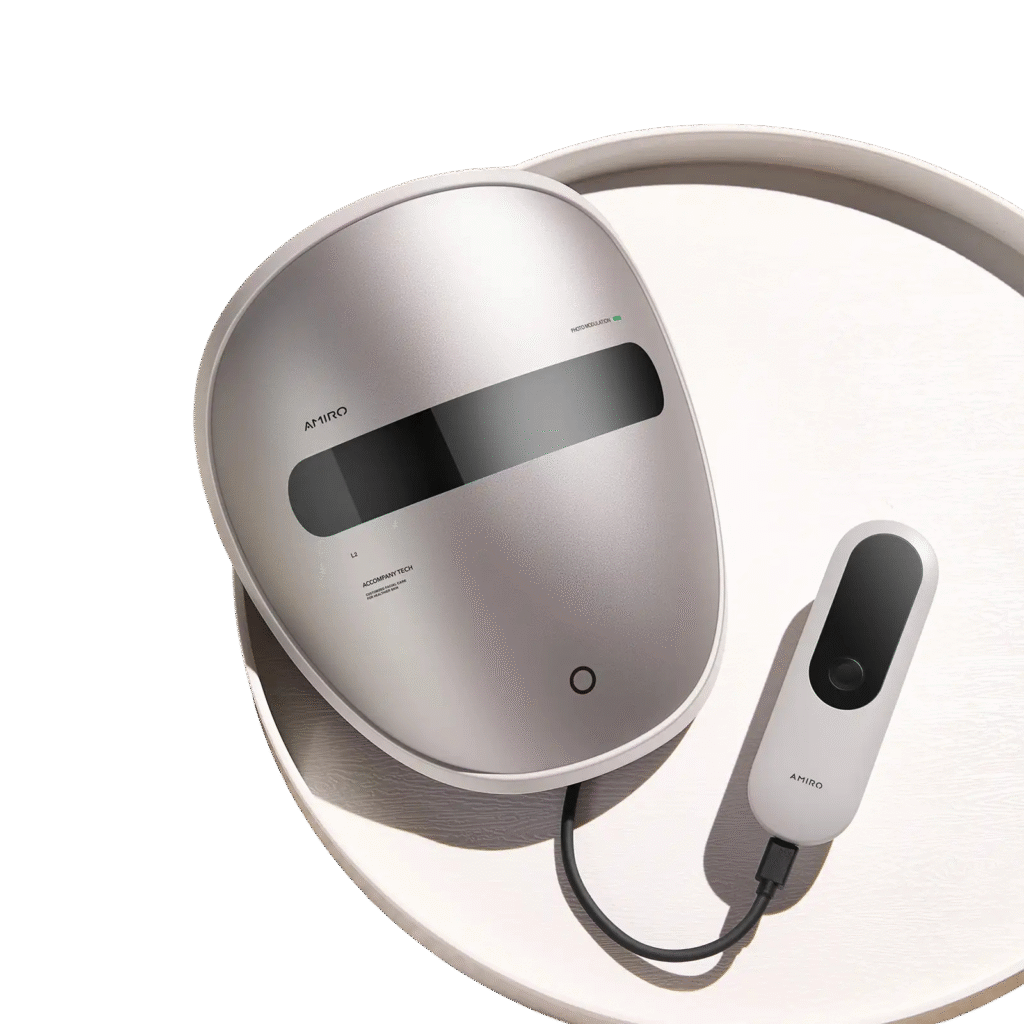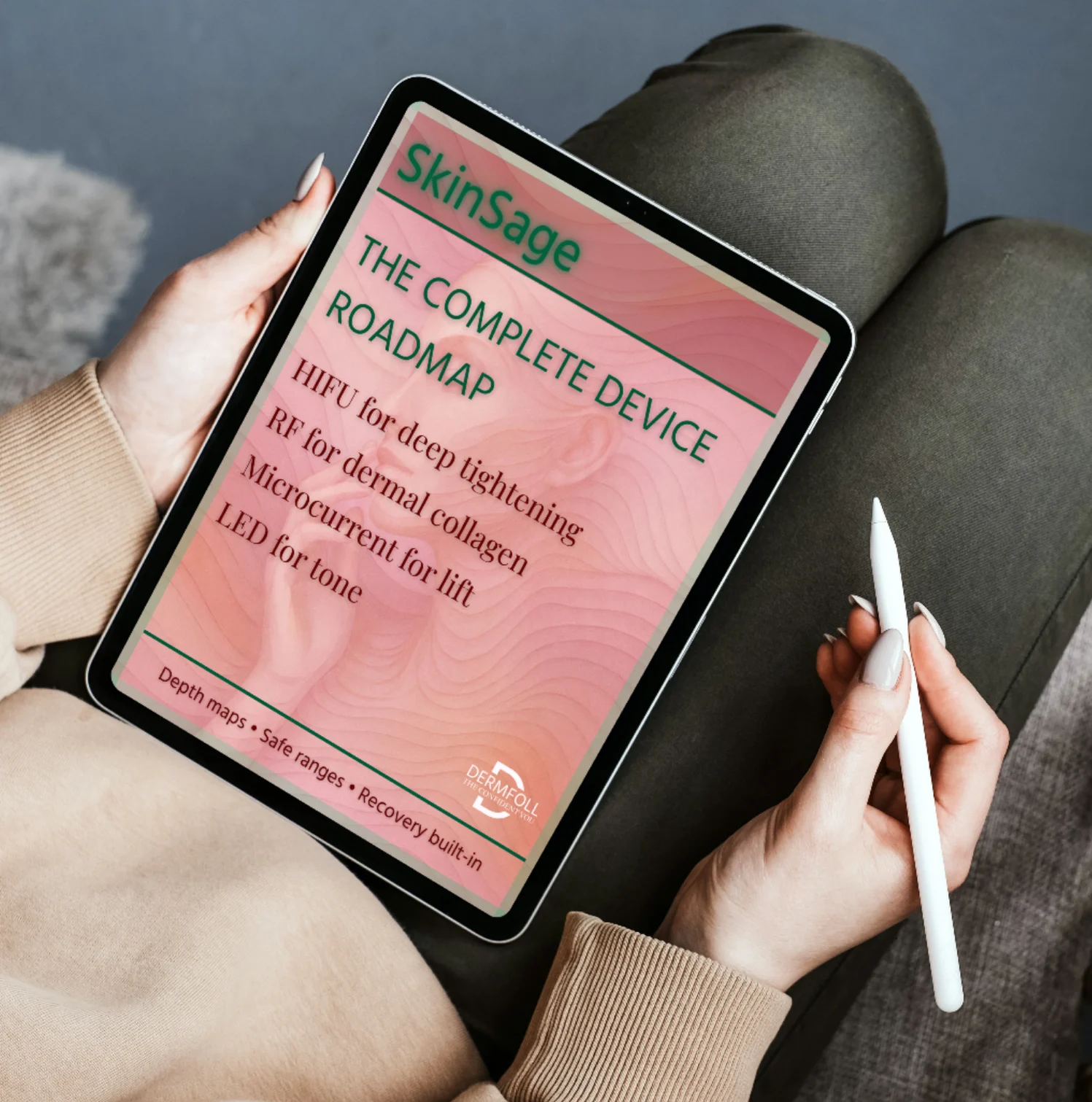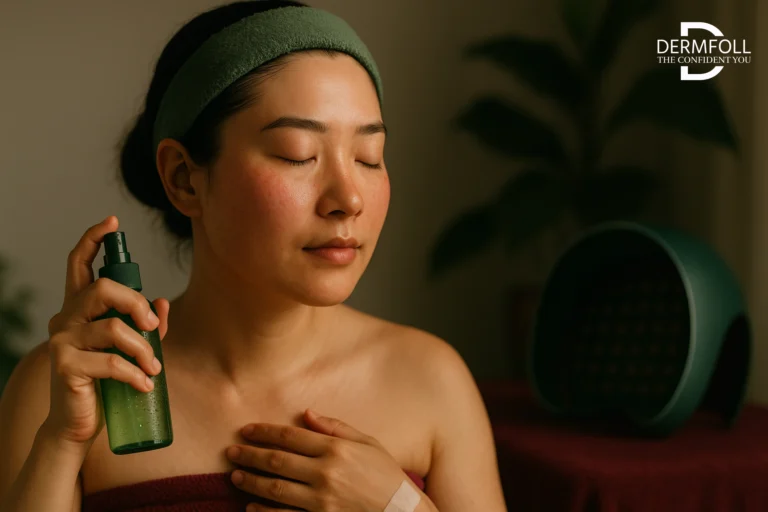Is Blue Light Therapy Right for You? Honest Answers for Real Skin Needs
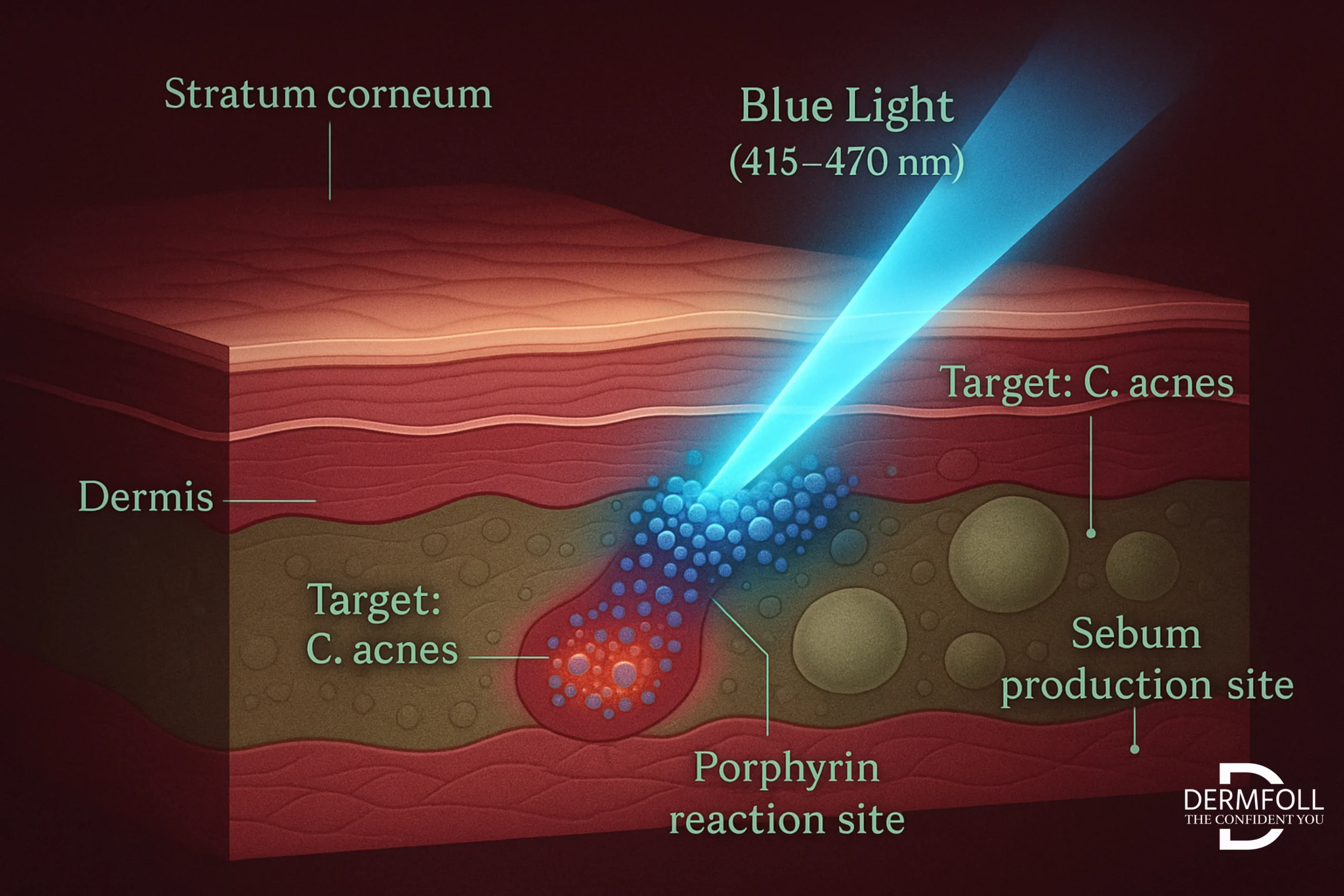
Acne, Oil, and Skin Goals That Match the Modality
If you’re someone who finds yourself constantly dabbing at forehead shine or dealing with breakouts that pop up like clockwork, blue light LED facial therapy might be exactly what your skin’s been asking for.
Blue light, especially in the 415–470 nm range, has been consistently shown to reduce acne lesions.
Targeting the exact zone where bacteria thrive: the uppermost layer of your skin. But here’s what’s especially promising, it’s not just about killing bacteria.
One clinical study observed notable improvement in both inflammatory and comedonal acne in as little as 4–5 weeks.
A clinical review from Photodynamic and Photobiological Effects of LED Light confirms:
“Blue light irradiation between 420–450 nm leads to the selective phototoxic destruction of Propionibacterium acnes, offering an effective, non-invasive treatment for inflammatory acne.”
Blue light goes after the root of breakouts, without the need for antibiotics or harsh topicals.
If you’re navigating adult breakouts owing to stress, hormone swings, or even the dreaded maskne, the outcomes can still be relevant.
Researchers looked at how C. acnes responded to blue light in a 2022 article.
They found that blue light can control sebum while also relaxing flare-ups, which makes it perfect for oily or combination skin that doesn’t often respond well to harsher therapies.
🔶 Calm Acne and Control Oil with Precision Blue Light
CELLRETURN Platinum LED Mask
Clinically calibrated blue wavelengths target acne bacteria and reduce oil safely.
AMIRO Spectra 5-in-1 LED Light Therapy Mask
Customizable blue light mode clears congestion while preserving skin’s natural moisture barrier.
When You Should Check with a Dermatologist First
Even though LED therapy at home is generally considered safe, there are important exceptions to keep in mind.
If you have a condition like lupus, porphyria, or rosacea that flares up with light exposure, it’s best to hit pause and check in with your dermatologist.
Some devices may market themselves as “gentle” or “derm-safe,” but the science says otherwise for certain users.
If you’re on medications like doxycycline, isotretinoin (Accutane), or other photosensitizing treatments, or again if you live with conditions like lupus or porphyria, check in with your derm first.
You would want to hold off on blue light led facial.
Also, if you’ve had any recent resurfacing treatments, think laser, chemical peels, or microneedling. your skin might be in a delicate recovery state.
Blue light could interfere with that process or even cause unwanted irritation.
What About Darker Skin? Fitzpatrick Types IV–VI and the Importance of Safe Dosing
One safety study noted:
“Dose-dependent erythema and transient hyperpigmentation were observed in higher Fitzpatrick skin types, especially in participants undergoing dose escalation protocols without cooling buffers.”
This controlled trial from the Phase I dose escalation study on LED safety clearly emphasized that skin phototypes IV–VI may be more prone to transient hyperpigmentation if dosed improperly.
And if you have melanin-rich skin, don’t worry, research has now evolved. The same study emphasized the importance of properly calibrated devices for all skin tones, acknowledging:
“Optimizing wavelength exposure for Fitzpatrick types IV–VI is crucial to avoiding rebound pigmentation, especially in post-inflammatory contexts.”
Bottom line: Blue light therapy is impressively safe when used correctly, but if your skin’s going through anything unusual, professional advice is worth its weight in gold.
For Melanin-Rich and Sensitive Skin: Safe Blue Light LED Therapy Starts with Smart Prep
Before Treatment:
- Skip photosensitizing agents. Especially important for Fitzpatrick IV–VI, since darker skin has a higher baseline melanin level, which can react unpredictably with light if sensitized.
“Subjects using isotretinoin or tetracyclines experienced exaggerated erythema when pretreated within 72 hours of session.” - Avoid exfoliants and acids. Retinoids, glycolic acid, salicylic acid, and vitamin C serums should be paused 1–2 days before your session to protect your barrier.
- Use barrier-supporting skincare pre-session. The study suggests applying a bland emollient 12 hours prior, especially if skin is dry, to reduce the risk of post-treatment transepidermal water loss (TEWL).
After Treatment:
- Hydrate immediately. Apply a non-comedogenic moisturizer with ingredients like ceramides or hyaluronic acid to restore the barrier and minimize irritation.
- Sun protection is non-negotiable. “Post-treatment pigmentation events in phototypes IV–VI were directly associated with sun exposure within 48 hours of LED therapy.
”Use SPF 30 or higher even indoors if you’re near windows or screens. - Watch for delayed pigmentation. Transient hyperpigmentation may appear 24–72 hours after a session.
It usually fades, but you should consult a dermatologist if it persists beyond 7–10 days.
🔶 Safe LED Therapy for Melanin-Rich and Sensitive Skin
CELLRETURN Platinum LED Mask
Tri-wave technology adapts intensity to all Fitzpatrick tones without triggering pigmentation.
AMIRO Spectra 5-in-1 LED Light Therapy Mask
Intelligent wavelength control minimizes erythema and enhances barrier protection post-treatment.
Debunking Blue Light Stereotypes Across Age, Gender & Skin Tone
Let’s bust a myth while we’re here: blue light LED facial treatments are not just for teens going through puberty.
Yes, they work wonderfully for hormonal breakouts, but the appeal stretches far wider.
More and more adults, especially women navigating perimenopause, stress-related acne, Or breakouts due to N95 mask-wearing, are turning to LED therapy at home devices.
As they offer results without disrupting sensitive, aging skin.
And here’s an exciting update from the literature:
newer LED systems have been calibrated to account for Fitzpatrick skin types I through VI, making them safe and effective across a wide range of skin tones.
With protocols that account for melanin sensitivity and the risks of post-inflammatory hyperpigmentation.
Here’s how it’s helping, one very real life stage at a time:
Hormonal Shifts: Skin That Flares Without Warning
Your hormones don’t stop acting up just because high school’s over.
Adult acne, especially the kind that clusters around the jawline or chin, can often be traced back to estrogen-progesterone imbalances, insulin fluctuations, or even thyroid shifts.
Blue light helps by going after the inflammation and oil imbalance that often accompanies these breakouts.
Since it’s non-comedogenic and barrier-safe, it won’t trigger additional irritation the way some topicals can.
“Blue LED exposure modulated sebaceous activity and decreased local pro-inflammatory cytokine expression, suggesting potential in hormonally triggered acne flare-ups.”
— Low Level Light Therapy, 2021
Premenopausal Breakouts: Skin That’s Sensitive and Changing
As estrogen levels begin to drop in the years leading up to menopause, the skin doesn’t just get drier, it often becomes more reactive.
You might suddenly break out, but also find that your go-to products now sting or cause redness.
That’s where LED therapy at home could be an option you can look into. Blue light works without compromising your barrier.
Making it a great option for those dealing with sensitive yet oily skin, a combo that can be tricky to treat.
“Subjects with perimenopausal skin profiles responded well to blue LED application, with no observed barrier disruption or epidermal dehydration.”
— Skin Improvement Effect of Tencel Sheet Mask Using Self-Luminous LED Light, 2022
Chronic Stress: Skin That’s Always in Overdrive
Stress triggers cortisol, and cortisol throws everything off, oil production, immune response, even wound healing. It’s no wonder our skin looks angry when our inbox is, too.
Blue light can’t meditate for you (unfortunately), but it can calm the visible aftermath.
Regular sessions have been shown to help reduce oil production and prevent the cascade of inflammation triggered by chronic stress responses.
“Cumulative LED treatments significantly suppressed inflammatory flare-ups in stress-induced skin models without altering normal epidermal function.”
— Photodynamic and Photobiological Effects of LED, 2020
So whether it’s shifting hormones, premenopausal skin changes, or just the day-to-day wear of stress, blue light LED facial therapy is more than a trend.
🔶 Gentle Light Solutions for Hormonal and Stress-Triggered Breakouts
CELLRETURN Platinum LED Mask
Blue and NIR synergy calms inflammation and balances sebum under chronic stress.
AMIRO Spectra 5-in-1 LED Light Therapy Mask
Multi-spectrum care supports hormonal skin shifts with non-irritating, restorative LED energy.
CONCLUSION
So where do we land?
We learned that blue light LED facial treatments aren’t just for teens, they’re a safe, effective, and dermatologist-backed option for adults navigating acne, oil, and sensitivity at every life stage.
From hormonal shifts to premenopausal skin changes and the everyday wear of chronic stress, this light-based therapy adapts to real-life skin needs.
It’s also increasingly accessible through calibrated, skin-safe LED therapy at home devices.
We also unpacked when it’s best to consult your dermatologist, especially if you’re using photosensitizing medications or have a melanin-rich skin tone that requires careful dosing.
Now that you know who blue light therapy is for,
the next step is how to actually use it. In our next post, we’ll break down when, where, and how to build blue light into your skincare routine, without overwhelming your skin (or your schedule).
